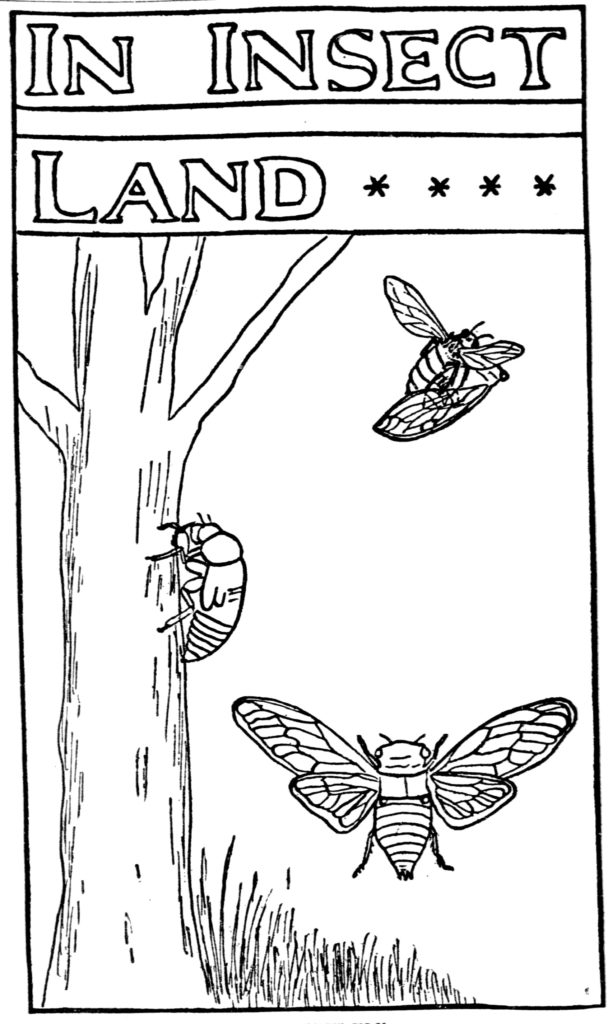Today I was searching old news papers for cicada information, and I came across a gem from the past.
One of the papers (New-York tribune. (New York [N.Y.]) September 21, 1902, Image 43) I found features an illustration of a cicada being carried off by a cicada killer wasp. The illustration appeared in the kids section of the paper and was meant to be colored.

The cicada is referred to as a “Harvest Fly”, which indicates that it is a member of the genus Neotibicen (back in 1902 I think the genus was either called Cicada or Tibicen). Judging by the description of the cicada it is likely a Neotibicen tibicen tibicen aka the Swamp Cicada.
Instructions for coloring the insects:
Directions for coloring-. Body black, with a dark
green band just back of the head, and two round
white spots on the first ring- or segment of the
abdomen. The eyes, legs and antennas are green.
The veins of the wings are green near the tody,
gradually shading into black at the tips. The
wings are transparent. The wasp, which is carry
ing off a dead harvest fly, is brown-the color of
bronze. The pupa or young harvest fly in the tree
is brown also. The tree trunk is dark brown; the
grass green.
The harvest fly, or cicada, often incorrectly called
locust is usually the herald of hot weather. He
comes out in August, and the hotter the day the
more energetically he sings. He is own cousin to
the seventeen-year cicada, and it takes him two
years to reach his growth. He begins life as a
Uny egg bidden away by his mother under the
bark of sum.- tree. Who, he hatches out a tiny
grub, he begins eating Into his surroundings and
often does much damage. Soon he changes to a
pupa, and falls to the ground, i” which he imme
diately buries himself. Here he remains for two










